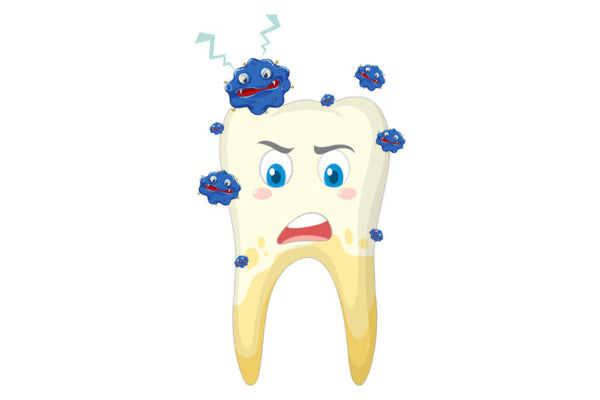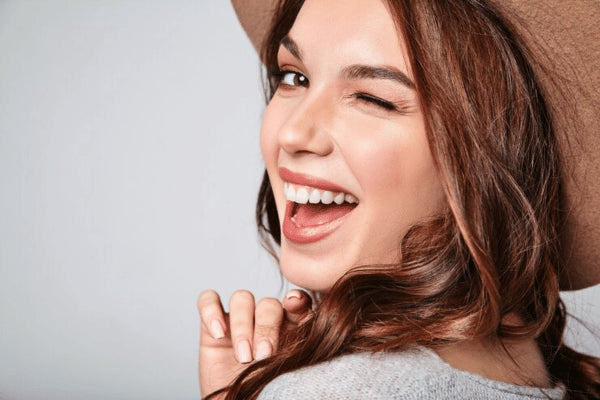
Table of contents
-
Understanding Teeth Stains
-
How Teeth Whitening Works
-
Types of Teeth Whitening Treatments
-
What to Expect During Teeth Whitening
-
Benefits of Straightening Teeth Before Whitening
-
Aligner32: Affordable At-Home Teeth Straightening
-
Get Started with a Free Online Assessment
-
Maintaining Your White Smile
-
Practice good oral hygiene
-
Limit staining foods and drinks
-
Use a whitening toothpaste
-
Schedule regular dental cleanings
-
Consider touch-up treatments
-
Conclusion
-
FAQs
A bright, white smile is a confidence booster. It can make you look younger, healthier, and more approachable. Teeth whitening is a popular cosmetic dental procedure that can dramatically improve the appearance of your smile. But how exactly does it work? And what can you expect from the process?
This comprehensive guide will delve into everything you need to know about teeth whitening, from the science behind it to the different methods available and what to expect after treatment. We'll also discuss the benefits of straightening your teeth before whitening them, and how Aligner32 can help you achieve a picture-perfect smile.
Understanding Teeth Stains

Before we dive into whitening treatments, let's understand why do teeth stain in the first place. The enamel, the hard outer layer of your teeth, is naturally porous. Over time, these pores can trap pigments from the food and drinks we consume, such as coffee, tea, red wine, and dark berries. Additionally, smoking and certain medications can also contribute to teeth discoloration.
How Teeth Whitening Works
Teeth whitening products contain bleaching agents, typically hydrogen peroxide or carbamide peroxide. These agents work by breaking down stain molecules within the enamel, making them less visible and leaving your teeth whiter.
The strength of the bleaching agent varies depending on the type of whitening treatment. Professional in-office whitening treatments typically use higher concentrations of peroxide for faster results. However, at-home whitening options often contain lower peroxide levels to minimize sensitivity.
Types of Teeth Whitening Treatments

There are several ways to whiten your teeth, each with its advantages and disadvantages. Here's a breakdown of the most common methods:
In-office Whitening
This professional treatment is performed by a dentist in their office. During the procedure, the dentist will apply a concentrated whitening gel to your teeth and activate it with a special light. In-office whitening is the most effective method, typically delivering dramatic results in just one appointment.
At-home Whitening
A variety of at-home whitening products are available over the counter, including whitening strips, trays, and toothpaste. These products are generally said to be less potent than in-office treatments and may take several weeks or months to achieve noticeable results. Several at-home clear aligner brands offer effective and affordable teeth whitening kits for you to achieve a bright new smile.
Whitening Toothpaste
Many toothpastes contain mild abrasives or low levels of peroxide to help remove surface stains. However, whitening toothpastes are not as effective as dedicated whitening treatments and are best used for maintenance after whitening or to remove minor stains.
What to Expect During Teeth Whitening
The specific experience will vary depending on the type of whitening treatment you choose. However, here's a general overview of what to expect:
In-office Whitening
The dentist will first clean your teeth to remove any plaque or debris. They will then apply a protective barrier to your gums and lips. The whitening gel will then be applied to your teeth and activated with a light source. The entire treatment typically takes about an hour. You may experience some temporary tooth sensitivity after the procedure.
At-home Whitening
The specific instructions will vary depending on the product you use. Generally, you will need to wear whitening strips or trays with whitening gel for a certain amount of time each day for several weeks. It's important to follow the directions carefully to avoid gum irritation.
Benefits of Straightening Teeth Before Whitening

While teeth whitening can dramatically improve the appearance of your smile, it's important to consider straightening your teeth beforehand if they are crooked or crowded. Here's why:
More Even Whitening
When teeth are misaligned, whitening gel may not reach all the surfaces evenly, leading to a patchy appearance. Straightening your teeth ensures a more uniform whitening result.
Improved Oral Health
Crooked teeth can be more difficult to clean properly, which can lead to plaque buildup and gum disease. Straightening your teeth makes it easier to maintain good oral hygiene and prevent future staining.
Aligner32: Affordable At-Home Teeth Straightening
If you're considering teeth straightening before whitening, Aligner32 offers a convenient and affordable solution. Their clear aligner system uses a series of clear, custom-made trays to gently move your teeth into their ideal positions. Aligner32 provides two convenient plans:
All-Day Plan
Wear your aligners for 22 hours a day for the fastest results.
Night Wear Plan
Wear your aligners for 10 hours a night while you sleep.
Get Started with a Free Online Assessment
Aligner32 offers a free online assessment to determine if you're a good candidate for their clear aligner system. The assessment takes just a few minutes to complete and is a great way to explore your options for straightening your teeth before whitening without any obligation.
Maintaining Your White Smile

Once you've achieved a bright, white smile through whitening, it's important to take steps to maintain it. Here are some tips:
Practice good oral hygiene
Brush your teeth twice a day for two minutes each time, and floss daily.
Limit staining foods and drinks
Avoid or moderate your consumption of coffee, tea, red wine, and other stain-causing substances.
Use a whitening toothpaste
Consider using a whitening toothpaste to help maintain your results and remove surface stains.
Schedule regular dental cleanings
Regular professional cleanings can help remove plaque and buildup that can contribute to staining.
Consider touch-up treatments
Over time, teeth can naturally stain again. You may want to consider occasional touch-up treatments with at-home whitening products or consult your dentist for professional whitening options.
Conclusion
Teeth whitening is a safe and effective way to achieve a brighter, more confident smile. By understanding the different whitening methods available and taking steps to maintain your results, you can enjoy a sparkling smile for years to come.
Additionally, if you have crooked or crowded teeth, straightening them before whitening can ensure a more even and aesthetically pleasing outcome. Aligner32's clear aligner system offers a convenient and affordable option to achieve a straighter smile before whitening. Remember to take their free online assessment to see if you're a candidate and get started on your journey to a picture-perfect smile!
FAQs
1. Is teeth whitening safe?
Teeth whitening is generally safe for most people when done correctly. However, it can cause temporary tooth sensitivity, especially for those with sensitive teeth. Consulting a dentist before starting any whitening treatment is recommended. They can advise you on the best option for your individual needs and ensure your teeth and gums are healthy enough for whitening.
2. How long do teeth whitening results last?
The longevity of teeth whitening results depends on several factors, including your lifestyle habits. Avoiding staining foods and drinks, practicing good oral hygiene, and using a whitening toothpaste can help maintain your white smile for longer. In general, professional whitening treatments can last up to a year, while at-home options may require touch-ups every few months.
3. Is it better to whiten teeth before or after straightening them?
For optimal results, it's generally recommended to straighten your teeth before whitening them. When teeth are misaligned, whitening gel may not reach all surfaces evenly, leading to a patchy appearance. Straightening your teeth ensures a more uniform whitening outcome. Additionally, having straight teeth makes it easier to maintain good oral hygiene, minimizing future staining.
4. What are some at-home whitening options?
There are various over-the-counter whitening products available, including whitening strips, trays, and toothpaste. Whitening strips and trays typically contain a bleaching agent that helps break down stain molecules on the teeth. Whitening toothpaste uses mild abrasives or low levels of peroxide to remove surface stains. It's important to choose products with the American Dental Association (ADA) seal of approval and follow the directions carefully to avoid gum irritation.
5. Should I see a dentist for teeth whitening?
While at-home whitening products offer convenience, professional whitening treatments performed by a dentist are generally more effective and faster. Dentists can use stronger bleaching agents and ensure the treatment is applied safely and effectively. If you have concerns about sensitivity or have underlying dental issues, consulting a dentist before starting any whitening treatment is crucial. They can recommend the most suitable option for your needs.


